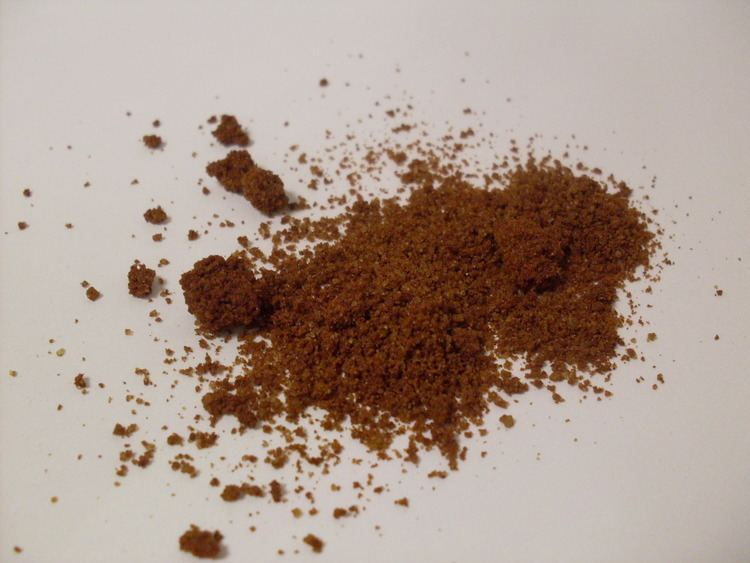Formula FeCl2 Melting point 677 °C Boiling point 1,023 °C | Molar mass 126.751 g/mol Density 3.16 g/cm³ Classification Inorganic compound | |
 | ||
Appearance tan solid (anhydrous)pale green solid (di-tetrahydrate) | ||
Iron(II) chloride, also known as ferrous chloride, is the chemical compound of formula FeCl2. It is a paramagnetic solid with a high melting point. The compound is white, but typical samples are often off-white. FeCl2 crystallizes from water as the greenish tetrahydrate, which is the form that is most commonly encountered in commerce and the laboratory. There is also a dihydrate. The compound is also soluble in water; aqueous solutions of FeCl2 are highly transparent and pale green in color.
Contents
Production
Hydrated forms of ferrous chloride are generated by treatment of wastes from steel production with hydrochloric acid. Such solutions are designated "spent acid," especially when the hydrochloric acid is not completely consumed:
Fe + 2 HCl → FeCl2 + H2The spent acid requires treatment before its disposal. It is also byproduct from titanium production, since some titanium ores contain iron.
Laboratory preparation
The dihydrate crystallizes from concentrated hydrochloric acid.
Anhydrous FeCl2
Ferrous chloride is conveniently prepared by addition of iron powder to a solution of methanol and concentrated hydrochloric acid under an inert atmosphere. This reaction gives the methanol solvate, which upon heating in a vacuum at about 160 °C gives anhydrous FeCl2. FeBr2 and FeI2 can be prepared analogously.
Fe + 2 HCl → FeCl2 + H2An alternative synthesis of entails the reduction of FeCl3 with chlorobenzene:
2 FeCl3 + C6H5Cl → 2 FeCl2 + C6H4Cl2 + HClFeCl2 is soluble in tetrahydrofuran (THF). In one of two classic syntheses of ferrocene, Wilkinson generated FeCl2 by heating FeCl3 with iron powder in THF. Ferric chloride decomposes to ferrous chloride at high temperatures.
Hydrates
The dihydrate, FeCl2(H2O)2, is a coordination polymer. Each Fe center is coordinated to four doubly bridging chloride ligands. The octahedron is completed by a pair of mutually trans aquo ligands.
Reactions
FeCl2 and its hydrates form complexes with many ligands. The anhydrous FeCl2 is a standard precursor in organometallic synthesis. Solutions of the hydrates react with two molar equivalents of [(C2H5)4N]Cl to give the salt [(C2H5)4N]2[FeCl4].
Applications
Ferrous chloride has a variety of niche applications, but the related compounds ferrous sulfate and ferric chloride enjoy more applications. Aside from use in the laboratory synthesis of iron complexes, ferrous chloride serves as a reducing flocculating agent in wastewater treatment, especially for wastes containing chromate. It is the precursor to hydrated iron(III) oxides that are magnetic pigments. Ferrous chloride is employed as a reducing agent in many organic synthesis reactions.
